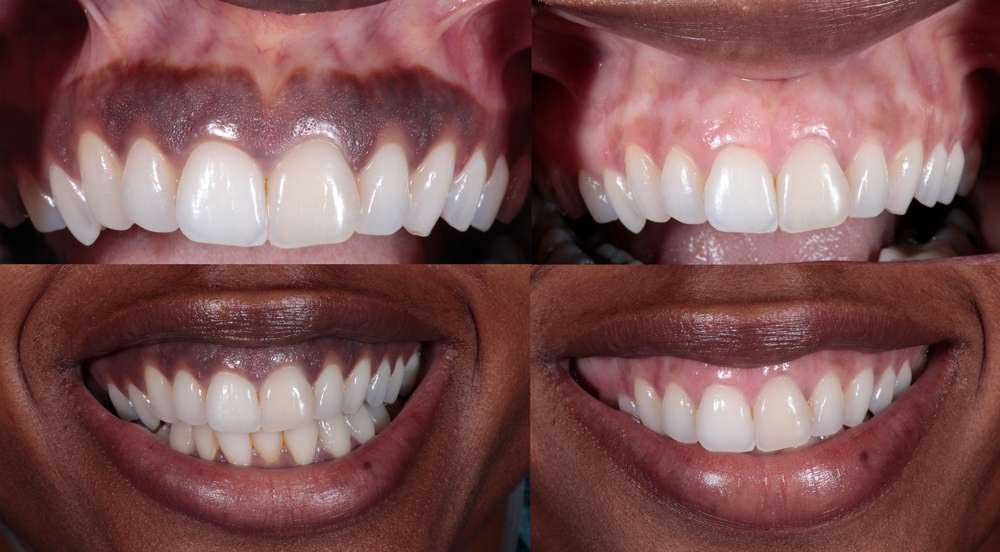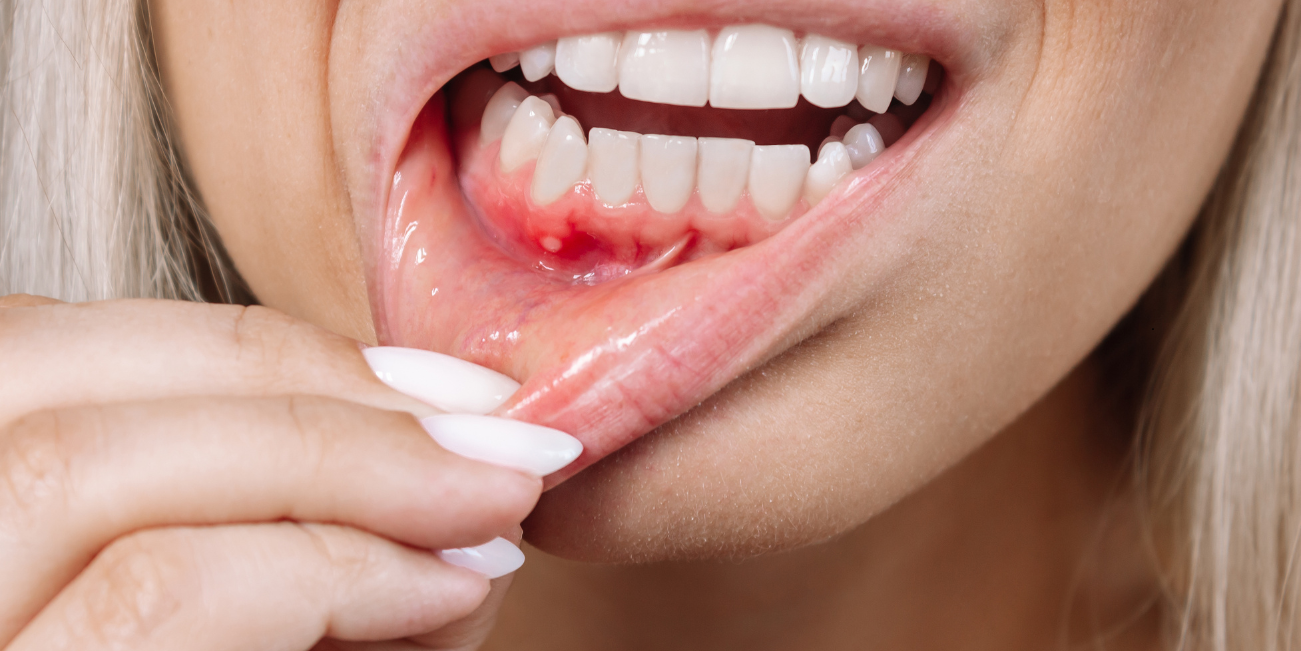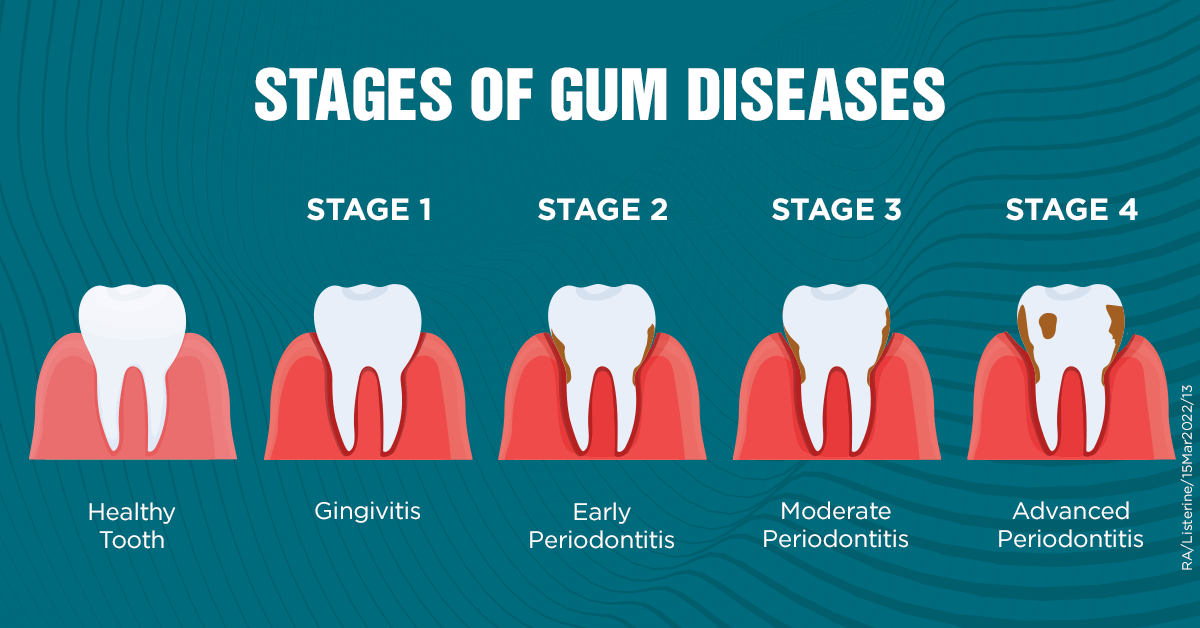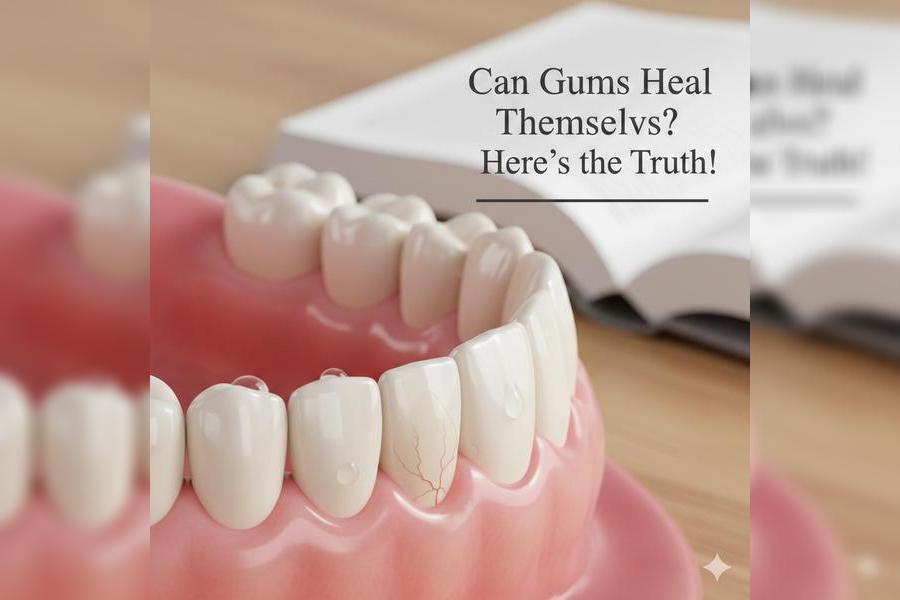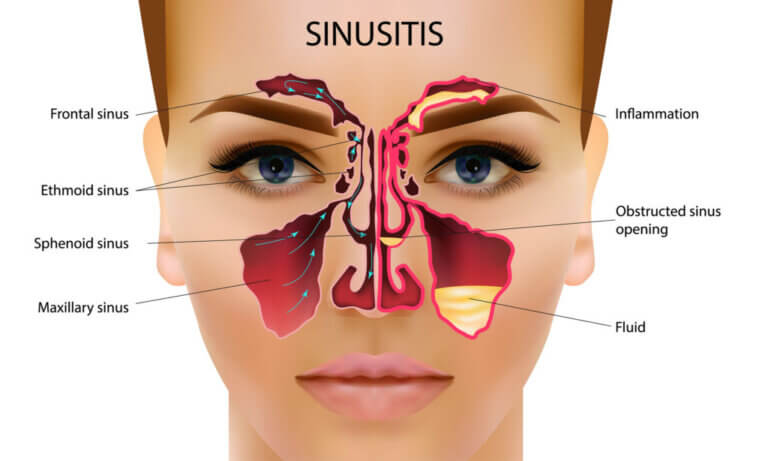You glance in the mirror, smile, and suddenly notice your gums look… purple. Your heart skips a beat. Is it normal to have purple gums? Or is this one of those silent red flags your body throws before something serious happens? Such as stage 3 periodontitis!
Here’s the truth: while gum discoloration can sometimes be harmless, in many cases, purple or dark gums are a warning sign of unhealthy gums and even early-stage gum disease. Most people think of gingivitis as just a little bleeding when they brush, but in reality, your gums can change color long before pain kicks in. Ignoring it can fast-track you into periodontitis, where teeth loosen, bone erodes, and infections spread.
Dentists often say your mouth is a window into your overall health, and they’re right. Discolored or unhealthy gums can point to poor circulation, smoking or vaping damage, vitamin deficiencies, and even systemic issues like heart disease. In other words, purple gums aren’t just a cosmetic concern - they could be the early sign of something you don’t want to leave untreated.
This article digs deep into what purple gums really mean, why they happen, how serious they can be, and what you can do to reverse the damage, naturally and clinically.
What Do Healthy Gums Look Like?
When we mention oral health, the gum does not get as much attention when compared to the teeth. However, gums are the backbone of a perfect smile, and a gum’s appearance says a lot about the condition below the stage.
Is it normal to have purple gums? Before panicking about discoloration of the gums or wondering why they appear to be purple, we should first learn what the gums should normally look like.
The Normal Color of Healthy Gums
Healthy gums usually look pink or coral in color with a natural pigmentation (brown or more definite color) depending on ethnicity and genetics. They are supposed to be smooth, without red, purple or white spots.
However, a sudden change in gum color such as the appearance of violet/bluish spots is the harbinger of some internal condition such as gingivitis or even bad circulation.
Texture and Firmness Matter Too
The color is not the only aspect. Unhealthy gums are spongy, tend to swell and feel tender, whereas healthy gums feel firm, resilient and tightly encompass the teeth. When you brush or floss your teeth and notice that your gums bleed - it is not a good sign; it is an initial sign of gum disease.
Signs Your Gums Are Thriving
-
No bleeding during daily brushing and flossing.
-
Tight grip around each tooth.
-
No swelling or puffiness.
-
Consistent color (pink or naturally pigmented).
When to Be Concerned
If your gums look purple, deep red, or bluish, or if they’re swollen and bleed often, they’re no longer in the “healthy” category. This is where gum discoloration becomes a serious indicator of problems like gingivitis, periodontitis, or systemic health conditions.
In short: healthy gums should be pink, firm, and painless. Anything else deserves closer attention.
What Is a Bad Gum Color?

Most people don’t think twice about the color of their gums until something looks off. But gum color is one of the clearest indicators of your oral health. So, what is a bad gum color, and when should you worry?
Normal Gum Color vs. Warning Signs
Healthy Gums often have a light-pink or coral-pink color, but there may also be a brown shade due to genetics and skin tone.
For example, darkening of the gums - the gums turning red, white, purple or black can signal irritation, infection, and other general healthcare issues.
Red and Inflamed Gums: Early Gum Disease
Red gums are an early indication of gingivitis, which is the first stage of gum disease. The teeth may also bleed upon brushing or flossing.
Unless treated, this redness may later lead to darker colors and subsequently turn into periodontitis, where the damage becomes permanent.
Purple or Bluish Gums: Circulation Problems or Advanced Gum Disease
If you’ve noticed deep purple or bluish gums and are asking yourself is it normal to have purple gums, the answer is almost always no. Purple gums may indicate:
-
Poor blood circulation.
-
Advanced gum disease (Stage 3 periodontitis).
-
Trauma or bruising.
-
In rare cases, oral cancer.
White or Pale Gums: Infection and Deficiencies
White or pale gums may indicate a fungal infection (like oral thrush), anemia or leukoplakia- a precancerous lesion which needs urgent treatment.
Black or Dark Patches: Natural or Dangerous?
Some individuals are also born with natural dark pigmentation on their gums, especially those with darker skin color. Sudden black spots are potential indications of necrosis, melanoma, or tissue death in the gums. That is why alterations in the color of gums must not be overlooked.
The Bottom Line on Bad Gum Colors
Any gum color other than normal pink or pigmented is a bad gum color. Whenever your gums appear red, purple, white, or black with or without associated bleeding, pain, and swelling, it is time to visit a dentist. These colors are usually indicators to unhealthy gums and gum disease or more serious underlying conditions.
Why Do Gums Turn Purple? Common Causes

Purple gums are not necessarily an emergency, however they should not to be ignored. The most common reasons are the following:
1. Gum Disease
Gums that are dark and inflamed are caused by a build up of plaque and tartar. In Stage 1 Gingivitis, the gums usually turn red but in Stage 3, the gums could be deep purple, puffier, and painful.
2. Bruising or Trauma
Purple gums may occur as a result of accidental bite, dental procedure or brushing with a rough toothbrush.
3. Poor Blood Circulation
Gums may appear bluish-purple due to circulatory issues, anemia and some systemic health disorders.
4. Smoking and Vaping
Nicotine decreases the blood flow leading to darkening of the gums. There is a question that is frequently asked by many patients: Can vaping lead to gum disease? Yes - not only does it intensify the drying of the skin and the growth of bacteria, but also causes discoloration and permanent damage.
5. Medications
Gum pigmentation can be induced by blood pressure medications, anti malarials and certain antibiotics.
6. Natural Pigmentation
Some individuals consider purple or darker gums to be absolutely normal, particularly when it has always been so since their childhood.
Is It Normal to Have Purple Gums?
Spotting a change in your gum color can be unsettling, and one of the most common questions people ask is: is it normal to have purple gums? The truth is that while some cases are harmless, most situations where gums appear purple or bluish signal an underlying problem with your oral health.
When Purple Gums Can Be Normal
Not every instance of gum discoloration is dangerous. For some people, darker gums are completely genetic and natural pigmentation. This is more prevalent in people with darker skin, where in some people gums are naturally brown, purplish or even spotted.
Green or purple gums may also be a side effect of a dental procedure or small injury (such as getting bitten by the tooth or brushing too forcefully). In such instances, the discolored tissue will usually disappear as the tissue heals.
When Purple Gums Are a Warning Sign
In most cases, purple gums are not normal and should raise concern. Persistent or spreading purple areas can be caused by:
-
Gingivitis or periodontitis (gum disease).
-
Poor blood circulation in the gum tissues.
-
Smoking or vaping restricts blood flow.
-
Vitamin deficiencies (like vitamin C or D).
-
Serious conditions such as oral cancer (rare but possible).
If your gums are consistently purple, it’s usually your body’s way of waving a warning flag that something is wrong beneath the surface.
How to Tell the Difference Between Harmless and Serious
-
Normal pigmentation: Stable over years, no pain, no bleeding.
-
Abnormal purple gums: Recently appeared, painful, swollen, or bleeding when brushing or flossing.
If you’re unsure, it’s always safer to get checked. A dentist can easily distinguish between natural pigmentation and unhealthy gums caused by disease.
So, is it normal to have purple gums? Only in very specific cases of natural pigmentation. For everyone else, purple gums are usually an early sign of gum disease, circulation issues, or other underlying health problems. If the discoloration is new, painful, or worsening, don’t wait - get professional help before the damage progresses.
What Do Unhealthy Gums Look Like?

Unhealthy gums typically show these warning signs:
-
Red, purple, or bluish in color.
-
Puffy, tender, or inflamed.
-
Receding from the teeth.
-
Bleeding easily during brushing or flossing.
-
Persistent bad breath (halitosis).
-
Loose teeth.
If you notice more than one of these signs, it’s time to visit your dentist.
How Do I Know If My Gum Is Rotting?
“Rotting gums” isn’t a scientific term, but it’s often used to describe severe gum disease (periodontitis). Symptoms include:
-
Dark purple or black gums.
-
Strong odor from the mouth.
-
Loose or shifting teeth.
-
Pus discharge between gums and teeth.
-
Pain when chewing.
If you’re wondering how to know if your gum is rotting, the bottom line is: if your gums smell bad, look discolored, and your teeth feel loose, you’re dealing with late-stage periodontal disease and need urgent treatment.
What Age Is Normal For Gum Disease?
Another common question: What age is normal for gum disease?
Gum disease can develop at any age, but it becomes more common after age 30. By the time people hit their 40s and 50s, untreated gingivitis often escalates into advanced periodontitis. However, even children and teens can develop gum problems if oral hygiene is poor.
When Is Gum Disease Serious?
Gum disease is always something to take seriously, but it becomes especially dangerous when it reaches Stage 3 or Stage 4. At this point, the infection damages bone and tissue, leading to tooth loss and even systemic health risks like heart disease and diabetes.
So, when is gum disease serious? When you see persistent purple gums, gum recession, bleeding, pus, or loose teeth - it’s beyond a cosmetic issue and now a medical problem.
What Is Stage 3 Gum Disease?
Stage 3 gum disease, also called advanced periodontitis, is when the infection spreads deeper into bone and ligaments. Symptoms include:
-
Purple or dark red gums.
-
Gum pockets deeper than 6mm.
-
Loose teeth.
-
Severe bad breath.
-
Receding gums exposing tooth roots.
At this stage, professional treatment is essential. Home remedies alone cannot reverse it.
How to Get Rid of Purple Gums at Home
You can’t always reverse gum discoloration at home, but you can support your gum health with proper care.
Home Remedies That Help:
-
Brushing twice daily with fluoride toothpaste.
-
Flossing gently to remove plaque.
-
Rinsing with a saltwater solution.
-
Quitting smoking or vaping.
-
Eating vitamin-rich foods (especially Vitamin C and D).
Natural Support With The Goodbye Company Gum Disease
If you currently suffer from poor oral health - bleeding gums, tooth pain, or sensitivity to hot or cold foods - bring in The Goodbye Company Gum Disease oral solution into your daily oral care routine.
This natural formula is infused with Omega-3 and Omega-9 oils, along with neem and clove essential oils, known for their antimicrobial and healing properties. It doesn’t just help prevent gum disease - it’s designed to soothe inflammation, fight bacteria, and support long-term gum health.
It’s hands-down the best natural gum disease cure for people who want a non-toxic, plant-powered solution.
Gum Colors And What They Mean
|
Gum Color |
Possible Meaning |
Action Needed |
|
Pink/Coral Pink |
Healthy gums |
Maintain oral hygiene |
|
Red |
Gingivitis, early gum disease |
Improve hygiene, see dentist |
|
Purple/Bluish |
Poor circulation, advanced gum disease |
Seek dental evaluation |
|
White |
Fungal infection, leukoplakia |
Professional check-up |
|
Black/Dark Brown |
Natural pigmentation or necrosis |
Monitor; urgent if sudden change |
Can Vaping Cause Gum Disease?
Yes, vaping can cause gum disease. While many believe vaping is “safer” than smoking, the nicotine in e-cigarettes reduces blood flow to the gums, weakens immunity, and allows bacteria to thrive. This results in:
-
Purple or dark gums.
-
Gum recession.
-
Bad breath.
-
Higher risk of infections.
So if you vape and wonder why your gums are turning purple, you have your answer.
Preventing Purple Gums And Gum Disease
Daily Habits That Protect Gum Health
-
Brush and floss twice daily.
-
Use a natural gum-care product like The Goodbye Company Gum Disease.
-
Limit sugar and processed foods.
-
Stay hydrated to keep saliva flowing.
-
Avoid tobacco and vaping.
Regular Dental Visits
Routine check-ups every six months help spot gum issues before they get worse. Scaling and deep cleaning can remove buildup that daily brushing misses.
Outlook
So, is it normal to have purple gums? Sometimes - but only in cases of natural pigmentation. In most other cases, purple gums mean something is wrong. They can be an early warning sign of gingivitis, a red flag for Stage 3 gum disease, or a side effect of smoking, vaping, or health conditions.
If your gums have suddenly turned purple, bleed often, or feel painful, see a dentist immediately. And if you want a natural way to prevent and heal gum issues, make The Goodbye Company Gum Disease oral solution part of your daily oral care routine. With its blend of Omega oils, neem, and clove, it’s more than a product; it’s peace of mind for your gums.


